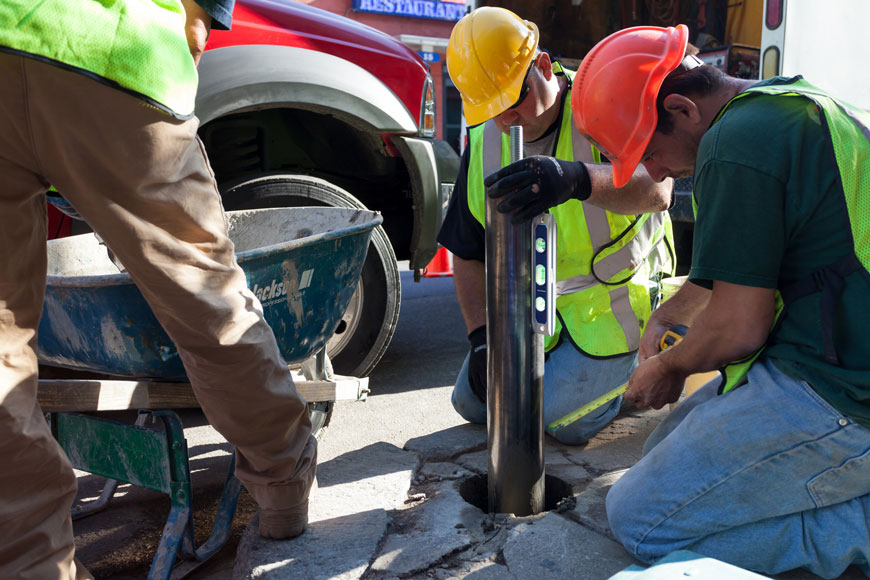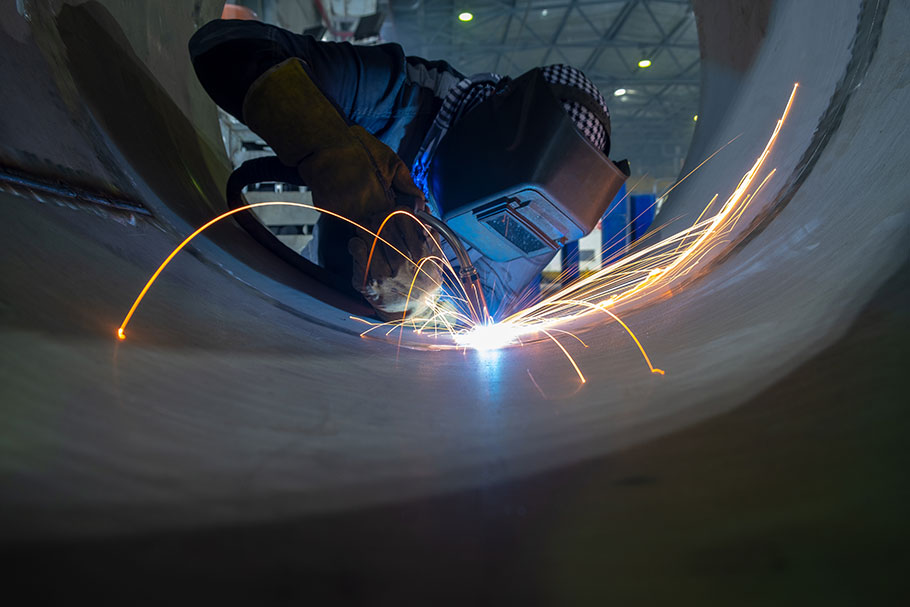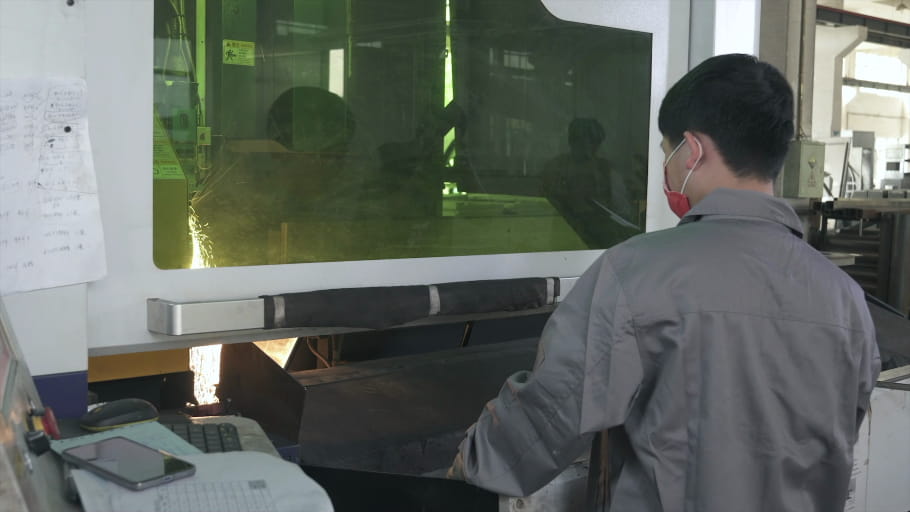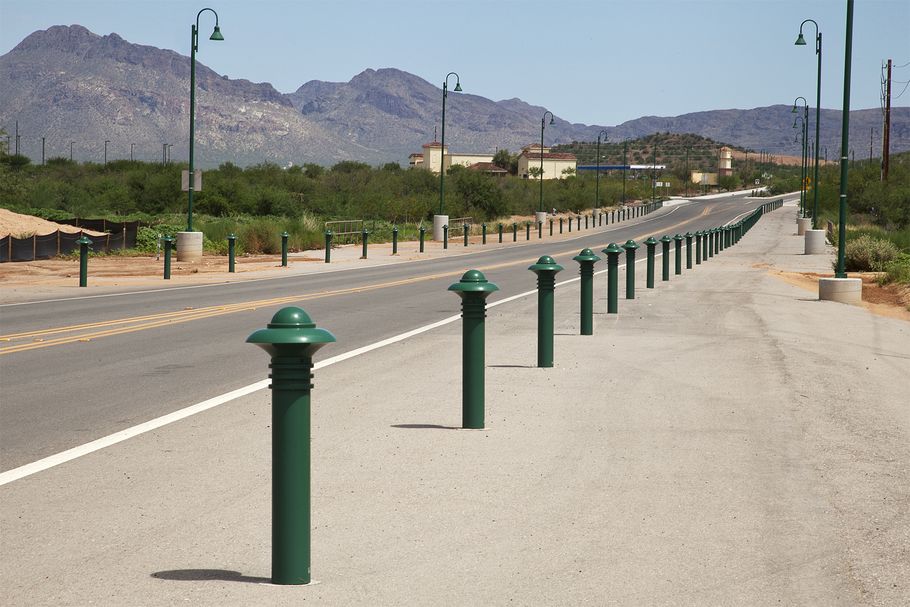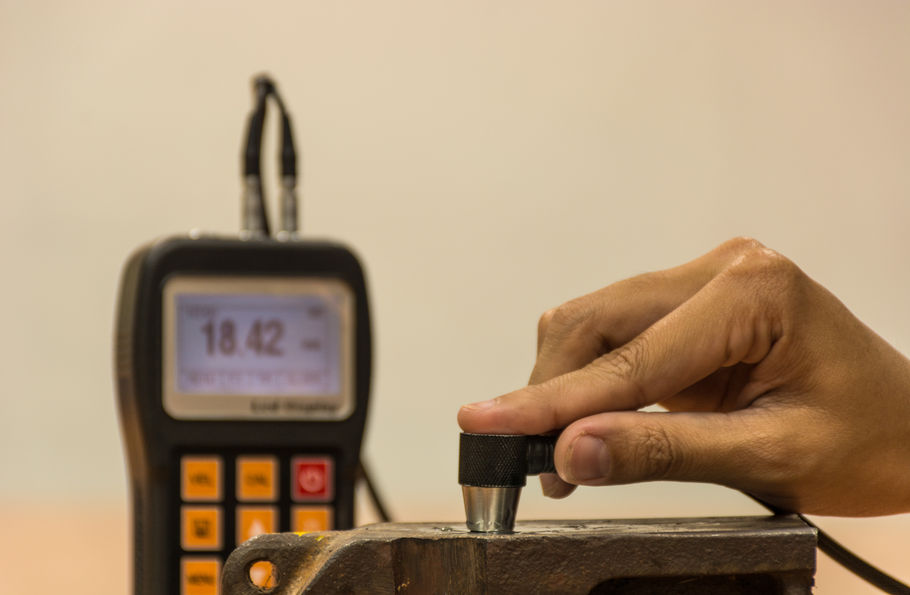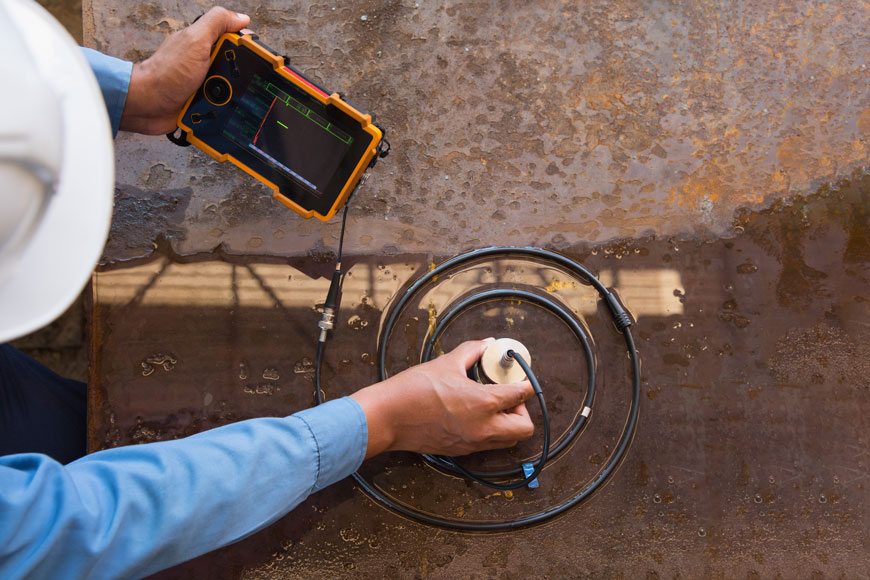Routing water away from your home
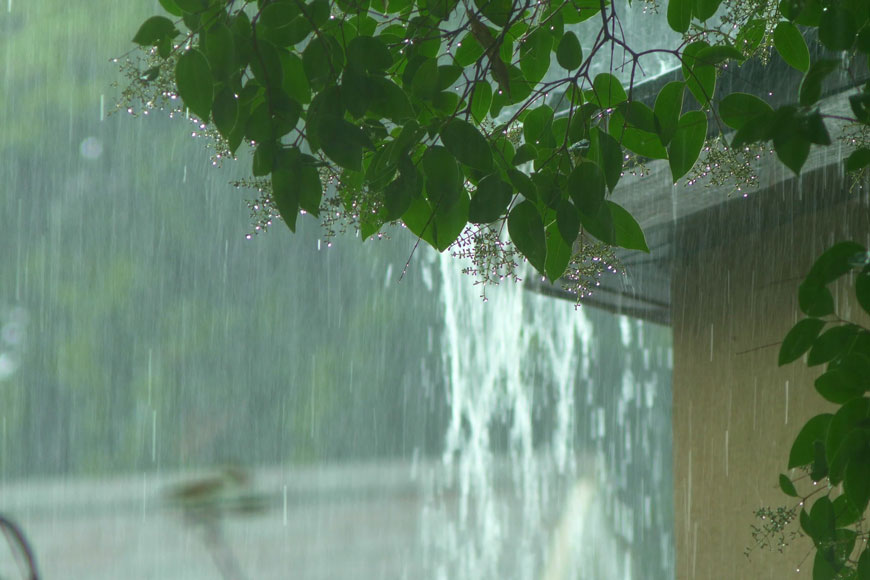
Managing rain, storm, and flood water is a growing concern for homeowners in changing local climate. Rot and structural damage can result when water management systems are overwhelmed. And there is more water to manage. Flood events are increasing. Heavy precipitation is up. Considering these stresses, municipal downspout disconnection laws are increasingly common. These laws require homeowners to disconnect their eaves and downspouts from municipal sewer lines, and instead manage rainwater over their properties. Homeowners are dealing with increasing water saturation. In many regions, renovation and new construction is being done with the expectation that higher volumes of water may become the norm.
What is trench drain?
Trench drain, also known as channel drains, slot drains, or line drains, are used to help manage water runoff from hardscape. Driveways are one common area to find these drains. Backyards with impermeable decking, like the concrete slabs built around pools, are another.
In older construction, these drains were sometimes just a slight divot in a downslope. Cobblestone streets may simply have a small crease in the surface to channel water. These older solutions are often effective in water management and are part of a classic architectural look. However, they also represent a tripping hazard—and can occasionally fill with debris, especially in autumn. Modern trench systems come with grating that lies atop the trench, preventing large objects from falling into the drain, and providing a safe surface to walk over. Trench grating also provides an opportunity to chose decorative elements to trim the hardscape around the house.
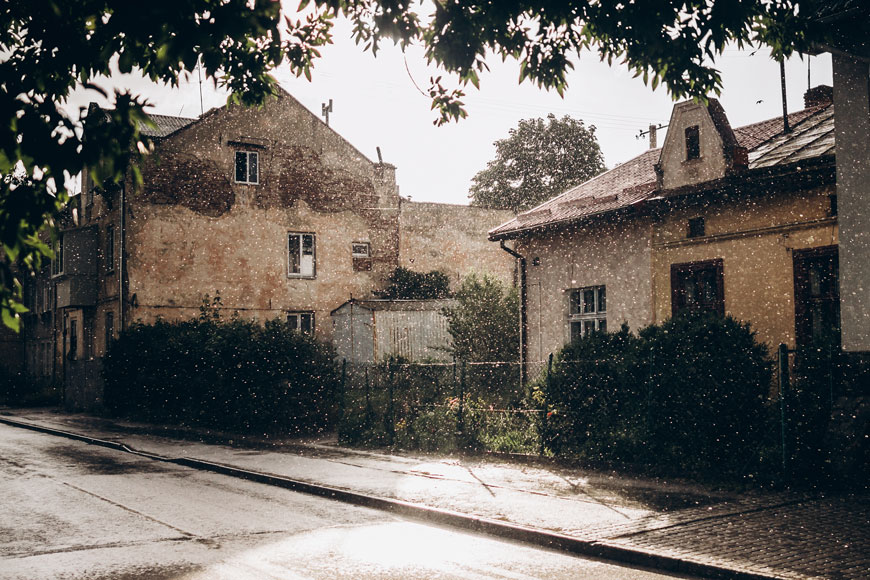
Options for trench drains in driveways
In small renos, homeowners may install trench by digging into softer landscapes like asphalt or dirt and then placing a preformed trench drain into the space. These systems generally are bought in lengths that snap together and contain a trench pan made of tough plastic or PVC. They are often set in a small concrete surround, but are sometimes just dug in. A grate or lid made of PVC, plastic, aluminum, or stainless steel is set on top. When the pan is installed correctly, the grate keeps debris from clogging the tube.
These systems manage water well, though in high traffic areas they often need refreshing or reinstallation over time. They also rarely provide a decorative finish.
When concrete slab is being poured in renovations or new builds, homeowners and builders have the option of choosing cast iron trench grates as a more rugged solution. These grates are generally placed on concrete formed on site by the contractor. It is a traditional art. The contractor creates a custom drainage solution by building the channel into a concrete slab. Trench frames are placed into this fresh poured cement to hold the grates securely in place. When set correctly, these durable grates will last as long as the concrete slab. They are also strong enough to easily handle cars, trucks, RVs, or trailers.
Because cast iron trench grates can be a permanent part of the hardscape, choosing a look that fits the home’s design is an enjoyable part of the process. Cast iron trench drain is at least partly a decorative choice, due to its long-lasting wear.
Driveway drain grates
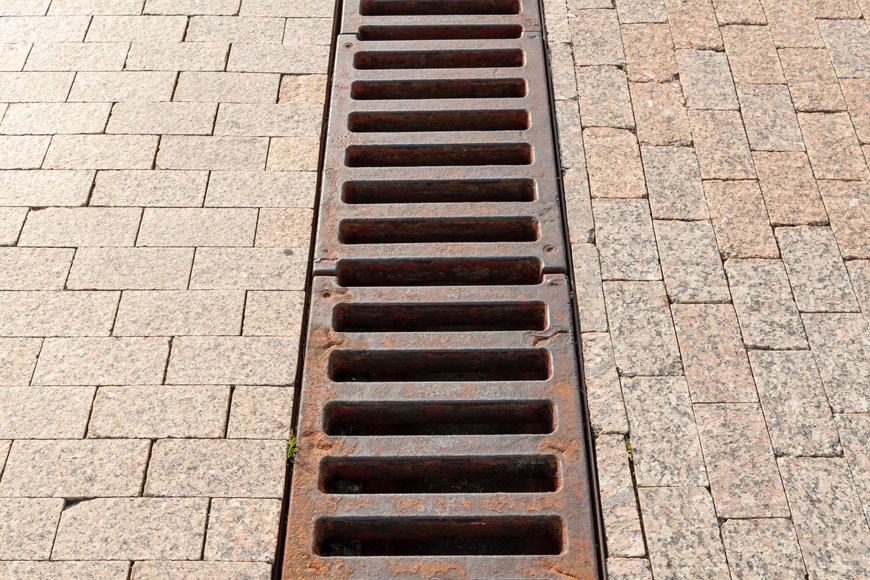
Any system that has a concrete sub-base, pad, or curb may use cast iron trench grates. They can be found with pavers, bricks, and in slab.
When driveway drain grates are installed in raw cast iron, a patina develops over time. At first, a flaky red-orange rust forms. This red iron oxide does not adhere well to the cast iron. However, underneath, a dark red-brown iron oxide is being created. As the trench grate ages, this red-brown patina becomes its main color.
The depth and variation of these red and browns can make it a great complement to brickwork. It can also provide a contrast to more lightly colored concrete or pavers.
Another popular finish for cast iron trench grate is black paint. Black cast iron allows for the creation of a strong, bordered look. Black cast iron trench grate can provide a standout visual frame for a pool, along a driveway, or in front of a garage. It might be set into light colored material to draw the eye, or it might be chosen as an unobtrusive part of a dark or shaded location.

View Greek Key trench drains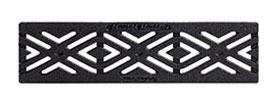
View Riverwalk trench drains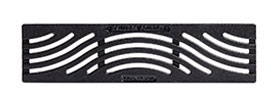
View Tidal Wave trench drains
Installation of driveway trench drains
Cast iron driveway trench grates are supported by cast iron frames. These frames are installed into new concrete, during the forming of a concrete trench drain. Trench drains are usually created when the floor slab of a parking garage is first being constructed.
When renovating, cast-iron topped trench drains still need to be installed into new-poured concrete. Unlike PVC counterparts, the heavy-duty nature of these finishes requires the stability of concrete. Therefore, in most cases, the addition is part of a larger renovation. One popular example is cast iron along the border of a new paver driveway. Concrete is often poured along the borders. Drains can be installed over the length, or along a shorter section, to help prevent erosion of the paver substrate from run-off channels. For example, the front walk leading to the home may produce a stream of erosion-encouraging runoff. A channel drain at the foot of the walk can counteract this annoyance.
How to form a concrete trench drain
Forming concrete trench drains takes the skill and time of an expert contractor, but also allows for flexibility in design. Here are some tips to make the process go smoothly:
- Pick the trench grate and frames before you start work. The width of the channel is determined by the width of the grate. The capacity of the drain is determined by width, depth, and how quickly the drain can empty. Knowing the width of the grate therefore may impact the rest of the trench design.
- Frames must be set at exactly the same height. If a trench grate rocks slightly when stepped on or rolled over, it can cause stress to the grate, frame, and even the concrete that will shorten the decades-long working life of each component.
- The drain frame should sit slightly below the surface of the concrete to allow water to flow over it.
- Frames are most secure when threaded into the concrete with rebar.
For those new to installation, trench drain excavation often seems much wider and deeper than necessary, given the eventual size of the drain. This space allows a contractor to create smooth, plumb forms and supports that don’t buckle when concrete is poured. The smooth forms that create the inside of the drain make the drain less likely to become clogged with hooked debris. Around the channel drain, the contractor will create a very precisely formed surface that is slightly sloped to bring water into the drain.
Slot drains around the home
Although cast iron trench is most often used outside the home for its rugged strength, it can be used inside where there is need. Trench can be used in garages to manage snow-melt brought in on vehicles, to drain areas where car-washing takes place, or to drain water after cleaning waste collection spaces in multi-family residential parking. On large estates with outbuildings like stables or barns, drains that allow for easy wash-up are also useful. A decorative trench grate provides more of an aesthetic accent than a circular plastic floor drain, while it also offers greater durability.
Trench drains for driveways and other areas around the home can be installed in simple plastic. However, those with an eye on long-term sustainable building, and those seeking greater decorative options, are rediscovering the utility and beauty of classical cast iron trench grates.

